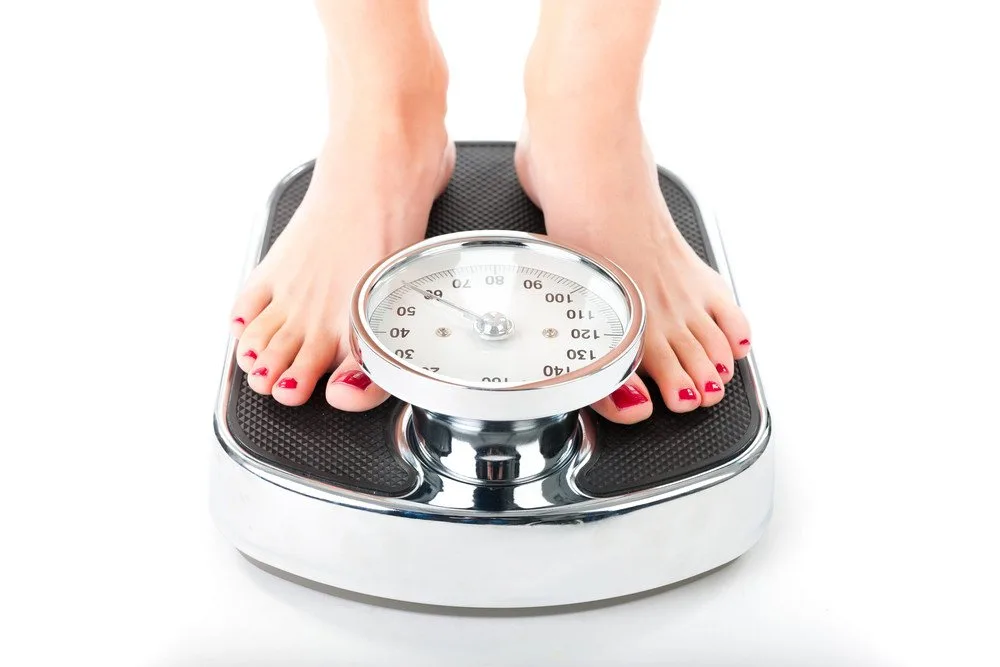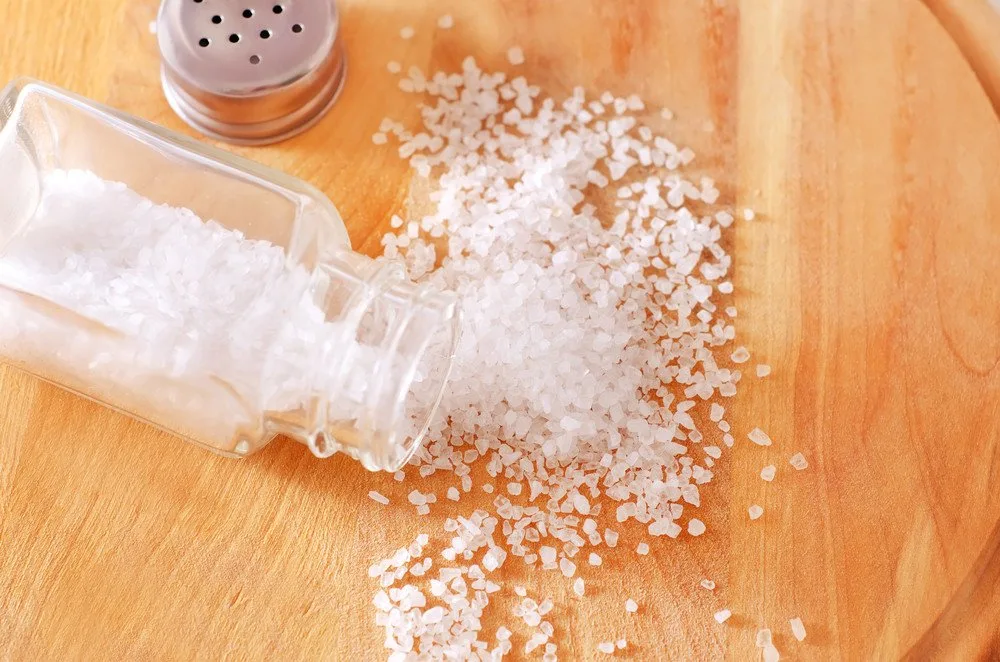When it comes to losing weight, the recommendation is pretty simple: eat less and move more. However, many people struggle with this over-simplified approach for a variety of reasons. The one-size-fits-all approach doesn’t always work because everyone is built differently.
If you’re trying to lose weight and having trouble despite adhering to your plan, here are some possible reasons why.
What’s affecting your weight?
1. Hormonal Imbalances

Pikul Noorod/Shutterstock
Hormonal imbalances are a common underlying issue that impacts one’s ability to lose weight. Conditions like Cushing’s syndrome and hypothyroidism This experience can be extremely frustrating, as a hormonal imbalance is hard to pinpoint and can trigger destructive behaviors that exacerbate the issue.
Working with a medical weight loss clinic can help you identify and treat hormonal imbalances. In many cases, it’s as simple as having some blood work done to determine what’s out of alignment and causing your body to hang onto weight.
It’s especially important to assess hormonal imbalances as you age. Both men and women experience hormonal changes that can impact weight management as time goes by.
2. Sleep Deprivation
It may sound like a dream scenario, but one of the best things you can do when trying to lose weight is to take a nap. Your body does its best work when it’s asleep. The better rested you are, the more effectively your hormones and metabolism will operate.
When you don’t get enough sleep, your body will hold onto weight. This effect is an evolutionary tactic— if your body is under duress or experiencing a perceived, it holds onto body fat. At a deeper level, sleep deprivation ties into hormonal issues. Most notably, a lack of sleep increases cortisol production. Cortisol is colloquially known as the stress hormone and has strong ties to weight gain.
Take steps to correct this issue by creating a nighttime routine to promote sleep. Do a self-assessment and see what’s preventing you from sleeping well, whether it’s a snoring partner or an old mattress. The sooner you correct the issues that are keeping you awake, the sooner you’ll be able to reach your goals.
3. Sodium Levels
Weight loss and fat loss are not the same thing. You can gain or lose weight without gaining or losing fat. While the scale has a time and place in weight loss goals, using it every day isn’t an accurate depiction of your progress.
One thing that could be impacting your weight loss is the amount of sodium you ingest on a given day. For example, if you have a can of soup for a quick meal, you may notice the scale creep up. This effect isn’t because you’ve gained fat; it’s because high sodium levels cause temporary fluid retention.
The same thing happens with carbohydrates, which is where a lot of misinformation about the effectiveness of low-carb diets stems from. One gram of carbs can store 2-3 mg of fluid. That’s why many people see their numbers drop quickly if they cut carbs.
If you notice your scale moving in the wrong direction despite your best efforts, consider your sodium intake from the day before making any adjustments to your efforts.
4. Menstrual Cycle
Biologically speaking, females are meant to carry more body fat than males. As frustrating as it may seem, this phenomenon is evolutionary in design— ancient women needed more body fat to carry and nourish children.
In addition to the evolutionary challenges women face regarding weight loss, the menstrual cycle can also directly impact achieving those goals. Toward the end of the menstrual cycle, estrogen levels increase, and progesterone levels decrease, causing your body to hold onto weight. This shift also negatively impacts energy levels, which can reduce your performance during training. Additionally, poor food choices and water retention also play a role when stepping on the scale during menstruation.
Focus on symptom management, hydration, and eating nourishing foods to help combat period-related weight gain. Do yourself a favor and wait until you’re back at the beginning of your cycle to step on a scale.
5. Hidden Calories
A lot of people underestimate the number of calories they consume. There are a few factors at work here. One of the main offenders is serving size. Eyeballing portions can lead to underestimating how much food you’re actually eating. This variance can make a significant impact, especially when eating high-fat foods— yes, even healthy fats.
Another consideration is things that don’t get accounted for, like cooking oils or seemingly healthy restaurant food. Many restaurants market their salads as healthy, but the portions and contents often make them more calorie-rich than a Big Mac. Liquid calories— such as sugar in coffee— also add up quickly.
Consider measuring your condiments and portions to ensure you’re sticking within the serving size. Read the labels to get a better understanding of what a serving really is.

6. Chronic Stress
Stress, like sleep deprivation, causes a spike in cortisol. Chronic stress wreaks havoc on the body and can make it feel impossible to lose weight, causing more stress.
Unfortunately, stress is a natural part of life and often unavoidable. However, it’s how you cope with the stress that makes all the difference. If you’re struggling with chronic stress, consider what issues are causing your concern. Reach out and talk to someone— whether a loved one or a professional— to vent and share your concerns. Consider using mindfulness coping skills like journaling and meditation to help let go of stress.
Take time out and create a self-care routine that helps you let go of your stress and puts your mind at rest. Your self-care routine can consist of anything from daily walks to bubble baths to regular massages. The key is to find something that fuels your soul and sets your mind at ease.
It’s especially vital to focus on stress management if you’re an emotional eater. These individuals tend to struggle with a vicious cycle of dieting, binge eating, feeling guilty, and experiencing more stress. Whether the main cause of your stress is time management or emotional eating, focus on correcting the cause.
7. Medications
Medicine is often a paradox, in that it will often fix one issue while causing another. Unfortunately, there are a lot of medications that are tied to weight gain. Antidepressants are commonly associated with weight gain, as are medications for diabetes, epilepsy, and high blood pressure.
When you start taking a new medication, consider tracking your weight in addition to your other symptoms. The medication might not directly cause weight gain; it may cause decreased energy levels or increased appetite. Have your physician look up whether your medication is known to impact weight maintenance and determine what other options are available.
Sometimes there are no other options available when it comes to treatment. If this is the case for you, focus on the other aspects of your weight loss journey.

8. Water Intake
The amount of water you drink will significantly impact your body weight, both in terms of temporary gain and sustainable loss. Drinking at least the recommended eight glasses per day can help promote weight loss by improving your digestion. Furthermore, drinking water can help you feel fuller for longer and slow down your eating.
While our brains are a complex organism, it sometimes gets its proverbial wires crossed. If you’re out of touch with your hunger cues, your mind may perceive signals of thirst for hunger. If you feel hungry between meals, have a glass of water, wait 20 minutes, and see if your hunger has subsided.
Keep in mind that when you start to drink more water, the scale might climb slightly. You can get a more accurate reading by weighing yourself in the morning after using the bathroom.

9. Metabolic Plateau
Many people on a weight loss journey will eventually hit a plateau. A plateau occurs when your progress comes to a standstill, even when you haven’t changed your routine. In fact, it’s that lack of change that often leads to the plateau.
It takes more energy (in the form of calories) to move a larger body. As you lose weight, your body requires fewer calories for Total Daily Energy Expenditure (TDEE)— the number of calories it takes to complete everyday tasks before they get stored as fat. If you aren’t adjusting your activity level or calorie consumption as you lose weight, then you’ll stop losing.
If you hit a plateau, make a slight adjustment to your daily intake to account for your new TDEE. Don’t rely on a fitness tracker to provide accurate information when making this adjustment. Start by cutting back 250 calories per day and evaluate the progress after two more weeks.
If cutting calories isn’t viable, consider how you can burn more. Change up your fitness routine to do new, challenging exercises. Your muscles will also become accustomed to training and burn fewer calories if you don’t incorporate progressive overload.
Keep in mind that healthy, sustainable weight loss equates to 1-2lbs per week for the average person. Making drastic cuts to speed up the process will lead to a rebound later.
10. Sedentary Lifestyle
Finally, even those of us who exercise regularly can be limited by a sedentary lifestyle. As desk jobs and computer work become more prevalent, our bodies adapt to reduced movement.

Counteract your sedentary lifestyle by incorporating micro-movements throughout the day. In other words, try to increase your daily step count. Get up and move for at least ten minutes every hour. Consider parking further away from the storefront or taking the elevator instead of the stairs. These micro-movements contribute to your NEAT— Non-exercise activity thermogenesis, A.K.A, every move you make that isn’t exercising. In other words, moving even the slightest bit more can make a big difference over time.
11. Building Muscle
As mentioned before, weight gain is not synonymous with fat gain. If your new workout routine incorporates resistance and strength training, you’ll start to build muscle.
It’s a myth that muscle weighs more than fat; five pounds is five pounds, whether its muscle, fat, feathers, or rocks. However, muscle is denser than fat, meaning more muscle fits in less space. As you start to build muscle and lose fat, the scale might stay the same.
If you’re incorporating strength training into your workout routine, consider using other metrics to track your progress. Rather than using the scale— which can’t differentiate between fat, muscle, and water— use progress photos, measurements, and how your clothing feels on your body.
If fat loss is your goal, it’s worth incorporating strength work into your exercise routine and shifting your mindset about numbers on the scale. Maintaining muscle burns more calories than maintaining fat as a part of your baseline TDEE. In other words, simply having more muscle will burn more calories even when you aren’t working out.
Conclusion
There are a lot of factors that contribute to weight loss, beyond eating less and moving more. Before you start cutting out food groups or paying for the next fad diet, consider evaluating the different variables on this list to determine whether there’s an underlying issue.




![women [longevity live]](https://longevitylive.com/wp-content/uploads/2020/01/photo-of-women-walking-down-the-street-1116984-100x100.jpg)










